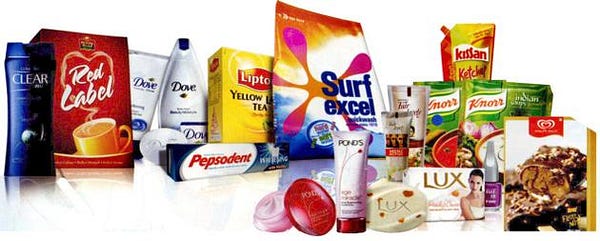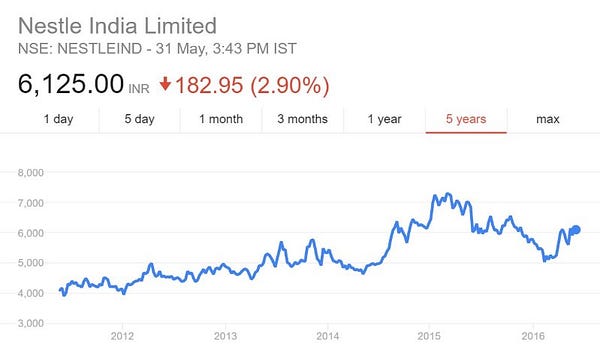Burhan Muzaffar Wani, often described as the ‘poster boy’ of the new phase of insurgency in the valley, is the new district commander of the Hizbul Mujahideen and a most wanted militant nowadays. Upon entering his house, I see a Wagon-R and a modified motorbike parked up front; the family is well-to-do by local standards. His father, Muzaffar Ahmed Wani appears from the rear entry of the house with his hand out for a shake.
“Last time I spoke to the national media, I was disappointed. My full statement was not used. They used only a portion of it,” Wani tells me straight away.
He is referring to a report by a mainstream Delhi-based newspaper. What it used was,“Islam allows you to go for Jihad (struggle) against cruelty and oppression. My son has chosen this path for himself.”
Wani, while holding his beard in his hands, adds that he was hoping they would show the reason behind Burhan picking up the gun. “They didn’t include the root cause. And that is what India is doing to our children here. Their policies towards the population here are the real reason for that (the militancy). Young boys are getting radicalized because of the everyday torture and humiliation they face.”
Wani adds, “Burhan is not the only one or the first one. ‘Yahaan aag pehlay se lagi hui hai (Kashmir is already burning). Toh us aag ko bujhanay kay liye pani chahiye, petrol nahi. (So to douse that fire, you need water, not petrol).’ They didn’t use this statement of mine.”
Wani, the principal of the Higher Secondary School of Tral, also alleges that another statement of his was twisted. He says that the statement which they twisted was that “if guns would be readily available, the majority would decide to use them.” According to him, they omitted the reasoning behind the youth taking up such steps.
He further clarifies, “Now anyone can claim that I promote gun culture. But I don’t. I just wanted to highlight the reason (behind it).”
As a father whose one son was allegedly killed in an “encounter”, and another is the ‘poster boy’ of militancy, how does he stay calm? Wani says he finds solace in the belief that a ‘martyr’ never dies. “First of all, I am mentally prepared for that. I do get disturbed sometimes that one day I will see him (Burhan) dead. Then I remind myself that Allah is above everything. I know my son (Khalid) is with Allah and alive. Burhan is away from me, and I do feel for that. But I know that if he dies on this path, he too will be a martyr,”Wani asserts.
He says this is what keeps him alive. “Otherwise, if I start thinking that my 24-year-old son was murdered and the other will die any day, then I don’t know what will happen to me. I can’t take care of worldly affairs then.”
Khalid, Burhan’s elder brother was shot down by security personnel last year in August in the forests of Tral. The security establishment claimed that he was shot down in an “encounter” while trying to meet his brother Burhan. They also claimed that he was getting young men to join the HM
KHALID WANI BROTHER OF BURHAN WANI ALLEGEDLY KILLED BY INDIAN ARMY
Return With Respect
Wani, like others, believes that Burhan was forced to pick up the gun. He expresses his wish of seeing him return home one day, but with respect. Wani also ‘prays’ that the renewed peace talks between India and Pakistan should succeed.
“Maybe if there is some kind of reconciliation between India and Pakistan, in which our representatives, the Hurriyat, are on board, they might devise a policy under which rebels can come back to normal life,”he says. He adds, “We pray to Allah that something comes out of the talks. We want peace. I want my son to come back, but with respect. Not shackled or chained.”
However, he feels that when the Hurriyat is left out, it shows that India’s intentions are not honest. “When they don’t involve the Hurriyat, that shows that India doesn’t want to settle this issue. If they involve Hurriyat, NC (National Conference) and PDP(Peoples Democratic Party) will lose their chair. There are and will be three stakeholders- India, Pakistan and Kashmir. All three have to be included. Two cannot decide our fate. We have to be a part of it,” Wani asserts.
However, he feels that when the Hurriyat is left out, it shows that India’s intentions are not honest. “When they don’t involve the Hurriyat, that shows that India doesn’t want to settle this issue. If they involve Hurriyat, NC (National Conference) and PDP(Peoples Democratic Party) will lose their chair. There are and will be three stakeholders- India, Pakistan and Kashmir. All three have to be included. Two cannot decide our fate. We have to be a part of it,” Wani asserts.
Illegal Detentions During VIP Visits
When President Barak Obama come to New Delhi in 2014, Wani and his now-deceased son Khalid, sitting miles away in Tral, were detained for a couple of days, he claims. The same thing happened during Prime Minister Narendra Modi’s visit last year, he says.
“I have faced a lot of problems after 2010, especially in 2012. They (police) used to detain me whenever militants used to strike. One day, unknown men snatched rifles from the police; they detained me and Khalid for 5 days. When Obama had come to Delhi, they detained Khalid! He missed his exams due to that,” Wani adds.
Wani alleges that every time a bullet was fired by someone, he was detained along with Khalid unnecessarily. “A Sarpanch (village head) got shot and again Khalid and I were put behind bars. During the elections (Parliamentary as well as assembly) we used to be put under detention. Khalid on an average used to spend two months in a year in jail. Most of the time they used to take us to the Tral police station, sometimes to Avantipora station,” a dejected Wani rues.
He also mentions that with him, Imams (prayer leaders) were also detained, which he feels was a direct attack on Islam. “I was detained for two days during Modi’s visit. Why? Also, Imams of various mosques were detained. They thought we might incite people in the mosque. We discuss Islam in the mosque. So according to me they put a curb on Islam by detaining the Imams.”
Being A Principal And Burhan’s Father
Wani had to face problems on the professional front as well for being a militant’s father.“They (Govt.) transferred me to another, far off location. I came here (Tral) on public demand as principal of the Higher Secondary school. Just after three days, I was transferred to district Shopian, that too in a far-flung village, just because I am Burhan’s father. Now I am back after two years. It was very difficult for me,” he alleges.
He feels that regular raids don’t bother him now. However, the police troubling him and his family without any reason remains a matter of concern. “They (police) raid our house every now and then. That is a routine for us now. And we don’t have a problem with that. It’s their duty. But when they unnecessarily used to detain and trouble Khalid and even me, that used to mentally disturb every one of us. They have searched our home may be a thousand times. Not only rooms, they check the walls to see if anyone is hiding,”says Wani.
Not Burhan’s Fight But Everyone’s
Wani also feels that the media and the people have put an unnecessary focus on Burhan.“I don’t really like it when people talk too much about Burhan as if he has started it. I always say that he is not the first one,” he says.
He adds, “I saw his first video on the television on a news channel. They were translating what Burhan wants to tell India. Since 1989, Kashmiris want freedom from India. It’s not just Burhan’s fight. It’s the whole of Kashmir which aspires for that. Burhan is one of them. If you go back in time, (you can) see how many were killed in Srinagar, Sopore,Anaantnagand other districts. More than a lakh people have died. What were they searching for? Azadi (Freedom). Even the separatists, (Syed Ali Shah) Geelani, Mirwaiz (Umar Farooq), (Yasin) Malik, (Shabir) Shah, what do they want? The same thing. Their way is different. Some of them picked up the gun first too. They are fighting it politically now. But at the end, the aim is the same. When all this started, Burhan was not even born,” notes a smiling Wani.
NC Was Bad, PDP Has Crossed All Limits
Khalid was the first civilian who was killed after Mufi Mohammad Sayeed took over as the state’s CM. (This interview was conducted before Sayeed passed away).
“At that time we thought a new government is in place and Mufti might do something,”Wani recounts.
However, Wani alleges that PDP has crossed the limits set by NC. “We had some hopes from PDP. Maybe, 10 percent more as compared to National Conference. But the role they have played in the current government, they have crossed the limits set by NC. They (NC) were cruel too, but not like them. Right now, Muslims have no value,” feels Wani.
When reminded that Mufti had said in the same video report by the Delhi-based paper that boys have no option but to resort to the gun, Wani says, “They have their own politics to take care of. If free and fair elections are held here, a new ‘Jamaat’ will emergevictorious. They won’t even be politicians, but unknown faces. It’s their duty to oppose each other (PDP and National Conference).”
Five-year-olds in Bijbehara, a town in South Kashmir, like to play a game. One person pretends to be Burhan Muzaffar Wani, the most wanted commander of the Hizbul Mujahideen. Three or four others pretend to be soldiers of the Indian army. The game revolves around how Wani escapes from the clutches of the army.
burhan when he was 16
Kashmiris who are now in their late-20s remember playing the same game in the 1990s, when thousands joined the militancy. Branches or pieces of wood did duty as rifles and the two sides engaged each other in fierce battle. Now these games seem to have returned to the Valley. Except the militant has a name.
Burhan Wani is a legend in these parts. He’s a local boy, after all, born in Tral, in South Kashmir’s Pulwama district. Six years ago, when he was 15, Wani left home to take up arms against the Indian state. Since then, the government has announced a Rs 10 lakh bounty on his head and taken out most of his close associates. But Wani survives, defying all expectations and leaving a trail of stories behind him.
Some say he visits his home dressed as a girl. Posts on social media claim Hindu girls from Kanpur want to marry him and write his name in their blood. If your name is Burhan, it’s best to stay off the streets at night – security forces might hear people calling out for you and mistake you for the Hizbul commander. Friends meeting up over chai trade stories about him.
One involves the time Wani went to the town of Anantnag. He called up Tahir Sheikh, a commander of the Territorial Army, to say he was in town and bathing in the Jhelum, using Lifebuoy soap. By the time Sheikh reached the river, there was no one to be seen. But there on the river bank lay a bar of Lifebuoy soap.
“What do I say?” said Burhan Wani’s father, Muzaffar Ahmed Wani, when asked about the legends surrounding the young Hizbul commander. “He is my son. I can only call him my son. Other people can call him a hero or something else.”
Celebrities and folk heroes
And so they do. “Burhan has become a narrative,” said a journalist in Bijbehara, who asked to remain unidentified. It is a narrative of heroism constructed around the new militancy that is said to have taken root in four districts of South Kashmir: Pulwama, Anantnag, Kulgam and Shopian. Local boys, mostly educated, mostly from affluent families, are taking on the might of the Indian state and security forces.
Wani and his cohort signed up with the Hizbul Mujahideen, an indigenous, pro-Pakistan militant outfit. A number of others are joining the Pakistan-based Lashkar-e-Toiba. Ask young men in Anantnag why they admire the new militants and they ask you why Bhagat Singh is considered a hero. Even police officers ruefully refer to the Robin Hood aura surrounding the new crop of militants. "We wish he comes out alive," said one senior police officer.
These are not the nameless multitudes who crossed over in the 1990s and came back as masked men. There was always a certain glamour attached to becoming a militant. But now, individual figures are thrown into sharp relief. Local memories and personal ties are hopped up on technology. This is the age of celebrity militants who are also folk heroes.
To begin with, their numbers are much lower than in the 1990s. Accordingto the ministry of external affairs, 14,356 “terrorists” and 2,358 “foreign militants” were killed in Jammu and Kashmir between 1990 and December 2001. According to data compiled by the criminal investigation department, 143 militants were active in the Valley this year. Of these 89 were local militants, 60 of them from South Kashmir.
To hunt them down, the Indian state has put thousands of boots on the ground. According to popular estimates, 7 lakh to 10 lakh security force personnel patrol the region. These troops are scattered across the whole state of Jammu and Kashmir and only part of this number is engaged in counterinsurgency. But, going by popular perception, all the guns of this formidable force are trained on militancy in the Valley.
The asymmetry of the battle has captured the local imagination, the idea the of strength of India being unable to catch a small band of militants. “In Tral, there are 10 militants and 10 lakh soldiers, why aren’t they catching them?” said the brother of one militant, taking a liberal view of the numbers.
Second, with security being tightened along the Line of Control, militants can no longer cross over in thousands to be trained and armed in camps in Pakistan or Afghanistan. Wani and his band of boys are believed to be operating from the mountains and forests of South Kashmir. Their activities are concentrated in a relatively small area: the entire Valley is around 135 kilometres long and 32 kilometres wide and the four South Kashmir districts make up less than half of this territory. So this strain of militancy is an intensely local phenomenon, generated within the crucible of the Valley and spending its energies there.
And, by now, it is well documented how Burhan Wani and cohort use social media to project their armed struggle – the famous Facebook picture where Hizbul members pose with guns; the solo shot of Burhan with green slopes in the background; videos of the boys playing cricket, sacrificing sheep, training with their weapons. These posts and videos have made the militants recognisable faces, reached their thoughts and motivations to thousands of youth glued to cell phones and desktops. They have also created a star cast of militancy.
There is Wani, of course, the class topper and cricket fan who liked Virender Sehwag’s upper cut and Shahid Afreedi’s big sixes. From Bijbehara there are the two Adils who ran away together: Adil Sheikh, the quiet, pious teenager, and dashing Adil Reshi, who looked like a film star, say those who knew him.
Sheikh, the 17-year-old son of an autorickshaw driver, was deeply religious. He led prayers at the local mosque, was particular about following rituals and forbade his sisters from using mobile phones. Shortly before he left home, he had saved up Rs 20,000 and contributed to a mosque being built in the area. It was a lot of money for Adil. Unlike the others, he had dropped out of school in Class VIII and earned money loading cement on trucks. That is how he met 24-year-old Reshi, whose family distributed the cement. The two Adils got close and decided to join up last June. The older boy still lives. Sheikh was killed in November.
From Laribal in Pulwama district, there was Ishaq Ahmed Parray, called “Newton” because his first name was the Arabic version of “Isaac” and because of his academic brilliance. His family paints the picture of a thoughtful, sensitive genius who was pained by the atrocities he saw around him. “He spent all his time studying,” said his brother, Masood Ahmad Parray. “He came first from nursery to 12th standard.”
Last year, Newton left home saying he was going to fill in forms for a computer course. He had even taken money for the examination fees. The boy never returned. A week later, the family was told by a police officer that he had joined the Hizbul Mujahideen. In March, he was killed in an encounter in Tral. He was 19 years old.
From the village of Karimabad, also in Pulwama, there was 29-year-old Naseer Ahmed Pandit, the policeman who battled the local drug mafia and spent his time in social service. The day he left, says his father, Ghulam Rasool Pandit, he donated Rs 2,000 to someone who had cancer. “He was against stone pelting,” added his cousin, Zubair Pandit. “He was always the first to vote. Most people boycott elections here. But he voted in the 2014 parliamentary elections.”
The former policeman was one of the militants posing in the Facebook picture. By then, he was a trainer for the Hizbul Mujahideen. In April, he was killed in an encounter in Shopian. Naseer’s father now collects articles about his son, who has been written about in national dailies and local magazines. He shows them to visiting journalists with quiet pride.
The mourners
The new militancy bears a sheen that has worn off the older generation. The armed movement of the the 1990s eventually degenerated into extortion rackets, violent squabbles between various factions and the settling of petty local scores. As their numbers increased, militants were forced to rely on the civil population for food and shelter. Supporters faced the wrath of the security forces as well as the Ikhwan, a force of mostly former militants who had changed sides and been co-opted into counter-insurgency. Relations between militants and civilians soured as the decade progressed.
But the current militancy, with its smaller numbers, has not yet put the same pressures on the local population. “Today’s boys don’t take money, they don’t become renegades,” said Ghulam Rasool Pandit. “Aasman aur zameen ke farq hai." It’s a difference of heaven and earth.
So for now, there is a groundswell of support for the new generation of militants. It is evident in the crowds that pelt stones to distract security forces during encounters and the protests that break out afterwards. “Earlier, when there was firing here, people would run away 20 kilometres,” said Pandit. “Now they come towards it. People are willing to give their legs, arms and lives.”
Admitted Liaqat Ali Khan, a former militant who later headed Ikhwan in South Kashmir: “This kind of support, people intervening in encounters, was not there in the 1990s.”
Support is also counted in the attendance at funerals, the serpentine procession of mourners trailing behind the bodies of dead militants. At Naseer Pandit’s funeral, militants even performed a gun salute while the army stayed away. “No else had such a big funeral,” said Ghulam Rasool Pandit. “People came from Baramullah and other places. Lashkar, Jaish, foreign militants also came. I didn’t see it because I didn’t go, but I was told. If you saw him once you would remember him. He was just such a guy.”
The funerals have become a matter of pride for grieving families, a validation of the armed struggle that killed their sons. “When Dawood [Sheikh, a top Hizbul militant] died, they read his janaza [funeral prayers] six times,” said Nisar Ahmed Parrey, Newton’s brother. “If they are not heroes then who is?”
BANGLOW HOUSE OF BURHAN WANI
funeral of burhan wani
people assemble at burhan wanis house to pay tributes
a kashmiri sikh bro bids fare well to Burhan







